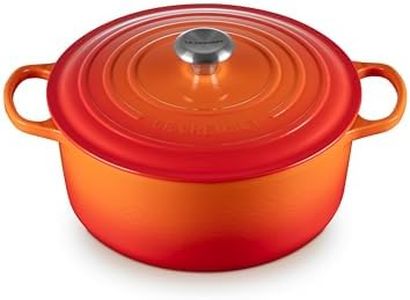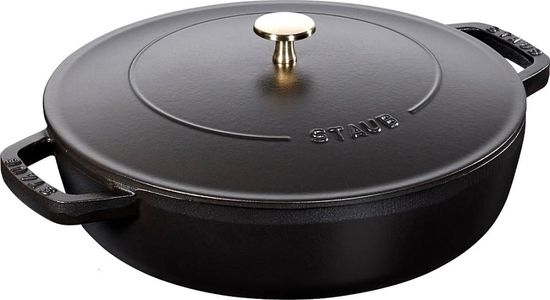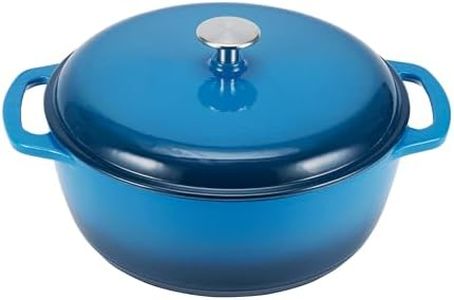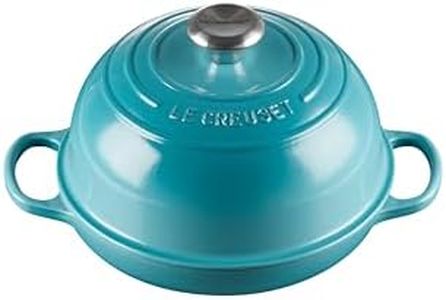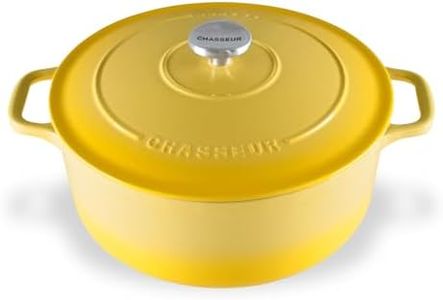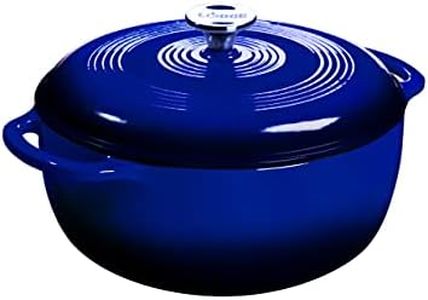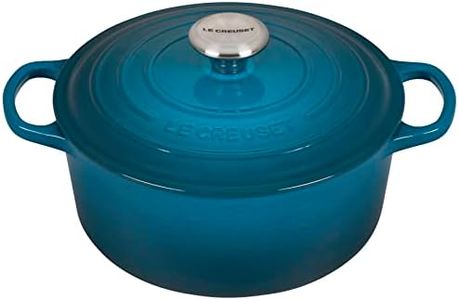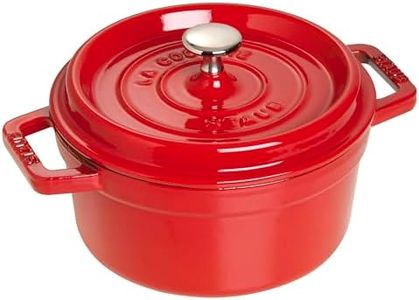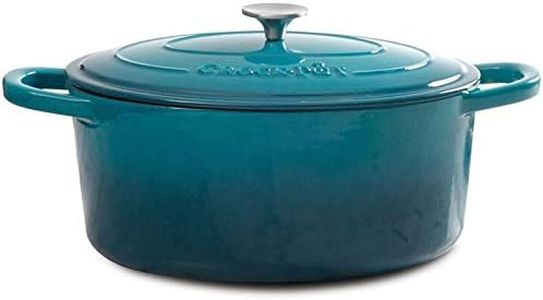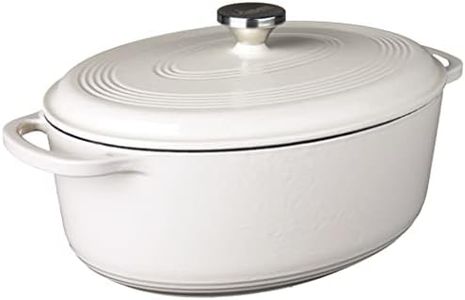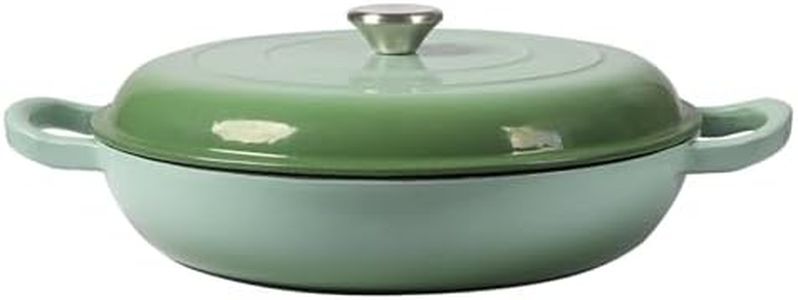We Use CookiesWe use cookies to enhance the security, performance,
functionality and for analytical and promotional activities. By continuing to browse this site you
are agreeing to our privacy policy
10 Best Cast Iron Dutch Oven For Bread
From leading brands and best sellers available on the web.Buying Guide for the Best Cast Iron Dutch Oven For Bread
Picking the right cast-iron Dutch oven for baking bread can make a huge difference in your results. The Dutch oven traps steam for a perfect crust and retains heat for even baking. To get the best match for your needs, think about how much bread you want to make, how you'll handle and clean the pot, and what features will make your baking enjoyable. Understanding the essential specifications can help you make a thoughtful choice.Material QualityDutch ovens are made from cast iron, which is valued for its heat retention and even heating. Some are bare cast iron, and some are coated with an enamel layer. Enamel makes cleaning easier and prevents rust, while bare cast iron requires seasoning but can develop a natural nonstick layer over time. If you prefer easy care, look for enameled; if you don’t mind caring for raw cast iron, that can be just as durable. Choose based on how much time you want to spend on maintenance.
Size (Capacity)The capacity of a Dutch oven is measured in quarts or liters. For bread baking, the most common sizes are from about 4 to 7 quarts. A 4 to 5-quart oven works well for small to medium loaves, suitable for most home bakers. If you plan to bake larger or multiple loaves, or want versatility for cooking stews as well, consider 6 to 7 quarts. Think about your typical recipe size and available oven space—choose a size that best matches your regular baking habits.
ShapeDutch ovens generally come in round or oval shapes. Round Dutch ovens are best for bread, as they promote even cooking and fit better in most home ovens. Oval ovens offer more space but may not fit well in smaller ovens and are trickier for round loaves. If your main use is bread, go with round; if you want to double as a roasting pan for meats, oval could be worth considering.
Lid DesignThe lid is crucial for trapping steam, which creates a crisp crust. A well-designed, tight-fitting lid keeps moisture inside. Some lids have spikes or nubs on the underside to redistribute condensation evenly over the loaf. Look for a Dutch oven with a heavy, snug lid—especially one designed to enhance steam circulation if bread is your focus.
Oven-Safe TemperatureBread baking often requires high heat. Not all Dutch ovens (especially those with plastic handles or knobs) can handle temperatures above 450°F/230°C. Check the maximum temperature rating to make sure it matches your recipes. If you’ll be using very high heat, pick a model with metal handles and avoid materials that could degrade in the oven.
Weight and HandlesCast iron is heavy, and a large Dutch oven can be difficult to lift, especially when hot. Sturdy handles are essential for safe handling. Consider your comfort with weight; lighter models exist but may not retain heat as well. Choose a size and handle design that feel manageable when moving in and out of your oven.

